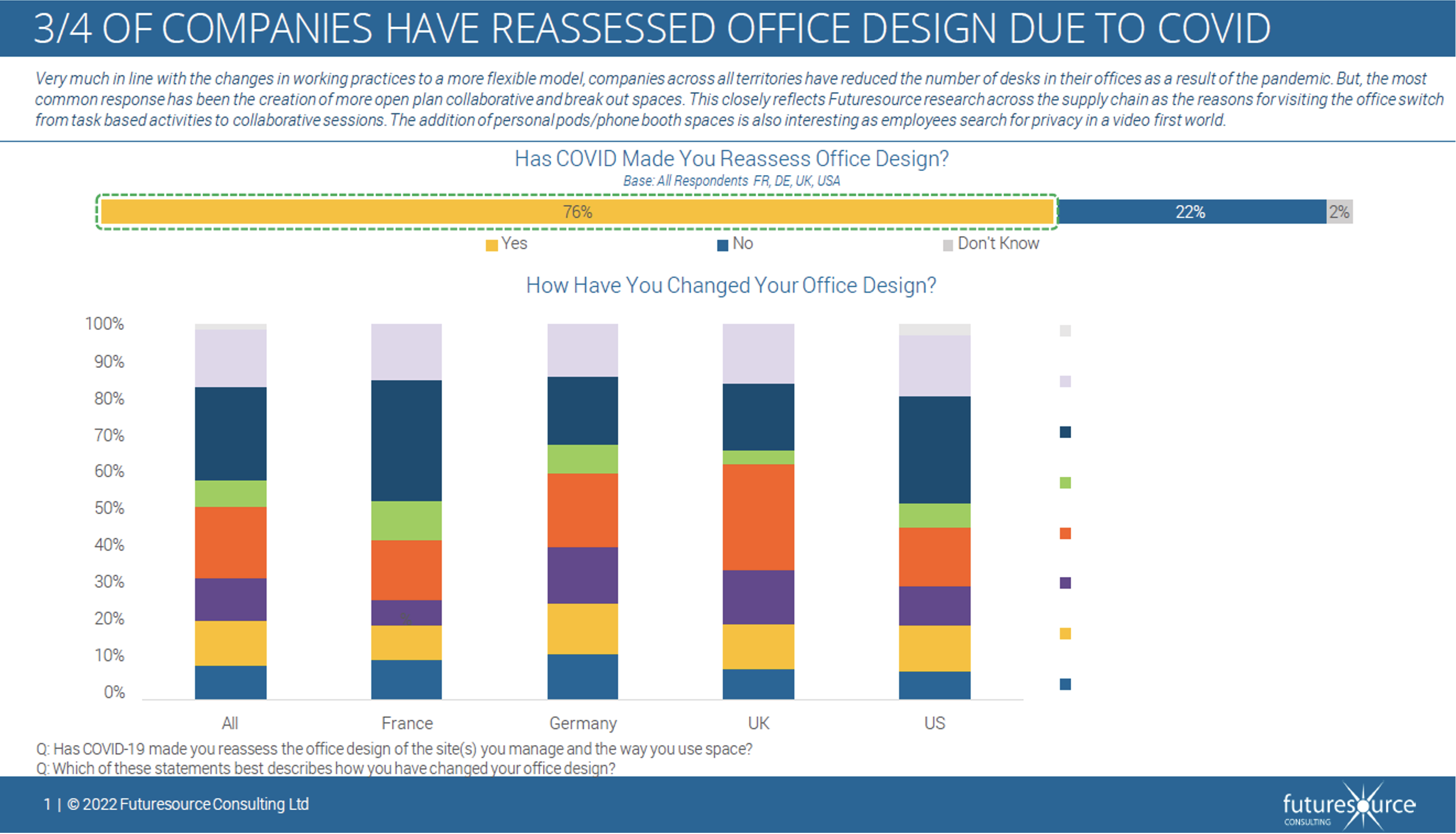Corporate AV budgets are increasing, and IT decision makers are focusing their priorities on dedicated meeting spaces and home working. In the new world of collaborative commerce, hybrid working looks like it’s here to stay. That’s according to Futuresource Consulting’s annual enterprise end user report, which surveys IT and AV managers across the USA, France, Germany and the UK.

“We’ve seen a dramatic reconfiguration of the corporate landscape,” says Chris McIntyre-Brown, Director, Futuresource Consulting. “Before the pandemic, 75% of workers were fully office-based, which has now dropped to its current level of just 25%. And decision-makers and employees alike tell us that a hybrid approach is the most likely long-term outcome.
“At the same time, digital natives – those born after 1980 and raised in a technology-centric environment – represent an ever-increasing proportion of the corporate world. At 54% of the workforce in 2020, digital natives will account for three in every four workers by 2030. This group has high expectations, not just around how they work and the spaces they use, but also how technology can support them in their daily working lives. The bar is being reset for collaborative working practices, and this provides a lucrative opportunity for many operators in the AV space.”
Younger Generations Leading the Way
The Futuresource study shows that younger generations, particularly Millennials and Gen Z, are more willing to embrace new styles of meeting. Compared with older staff, they don’t feel as compromised when attending meetings remotely. They are also involved in a higher proportion of meetings where group work is carried out to create or amend content.
When it comes to device usage, younger employees also express a preference for using their own devices. They are increasingly sharing content in meetings and are more likely to use smartphones to connect to a display.
Across the entire workforce, personal device usage is rising. Beyond mobile phones, which are also being used to access work emails and work-related services, one in three respondents said they were using personal devices in meeting rooms. This presents IT departments with a number of issues, mainly concerning integration with meeting room AV, support and extreme data security risks.
Meeting Rooms on the Rise
With close to 10 million meeting spaces in Western Europe and almost nine million in the USA, the enterprise market has been an increasingly attractive vertical for technology providers. Now, companies are clearly looking to increase the number of meeting rooms on the sites they manage with small (1-6) and large (15+) rooms the key investment focus.
Beyond dedicated meeting spaces, the study shows a continuation of the trend towards employees using ad hoc spaces for meetings. “A large proportion of companies recognise this trend and are investing in technologies for these spaces,” says McIntyre-Brown. “Indeed, over two thirds see this as a medium to high priority in the future.”
While supporting these spaces presents challenges for companies in the short term – those who are under-prepared for a collaborative, hybrid or digital workforce – it provides many new opportunities for the supply chain to take advantage of.
AV Hardware still has Room for Improvement
“Current installed technologies comprise mainly of basic AV hardware,” says McIntyre-Brown. “Display and telephony devices are prevalent, and while employees feel meeting room requirements are largely being met, no meeting room features scored particularly high in our survey. Employees also struggled to prioritise technologies by importance and satisfaction.
“This poses challenges for decision makers in meeting the needs of the workforce. There’s also ambiguity around future investment plans, which highlights the requirement for guidance from the supply chain.”
Future Vendor Opportunities in AV
Beyond basic AV, the installed base of technology is relatively low, which presents an untapped opportunity for technology providers. Corporates will increase spend on collaborative tools, which are a key industry focus, vital for supporting hybrid workforces, yet under-utilised at the moment. In the longer term, the industry will increasingly focus on delivering tools for more immersive hybrid meeting environments, plugging into the innovation and rapid developments seen in the wider ecosystem.
As the industry moves forward, closer relationships are also being formed between Pro AV and IP solutions. Broadcast and event tools are merging with video conferencing tools, enabling enterprises to create richer interactions with employees and customers. These new solutions are having to work with a wider set of enterprise tools, which poses challenges for connectivity solution providers. However, it also presents opportunities for AV managed services and hosted solutions, and will be a key feature of the future landscape.


